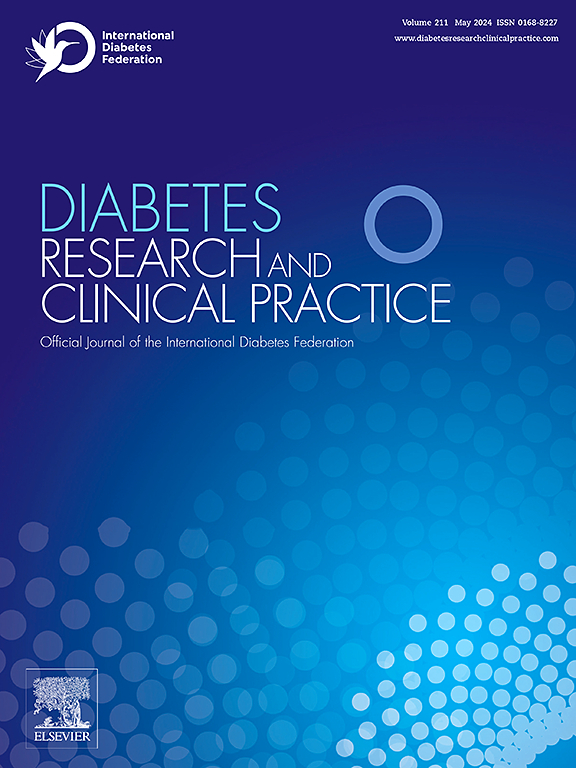Comparative effectiveness of different glycemic criteria for the diagnosis of gestational diabetes mellitus: a target trial emulation
IF 6.1
3区 医学
Q1 ENDOCRINOLOGY & METABOLISM
引用次数: 0
Abstract
Aims
There’s no scientific consensus on the best way to diagnose gestational diabetes mellitus (GDM) globally. This study uses target trial emulation to assess different glycemic criteria for GDM diagnosis.
Methods
38,995 singleton − pregnant women who took a 75 − g oral glucose tolerance test at 24–32 weeks of gestation were involved. Cloning, censoring, and inverse probability weighting were applied for emulation. Log − binomial regression estimated the effects of various criteria on adverse birth outcomes, and statistical significance and estimates were evaluated.
Results
4,539 women (11.6 %) were diagnosed with lower criteria, 2,463 (6.3 %) with intermediate, and 1,744 (4.5 %) with higher criteria. The proportion of large − for − gestational − age (LGA) infants was 7.12 % in the lower criteria group and 8.26 % in the higher criteria group (RR = 0.96, 95 % CI: 0.90 to 1.02). Similar LGA risks were found between intermediate and lower criteria. All outcomes showed statistical significance and agreement with targeted trials.
Conclusions
Lower glycemic criteria increased GDM diagnosis 2.53 − fold compared to higher criteria and 1.80 − fold relative to intermediate criteria, yet risks of LGA newborns and other issues remained unchanged.
不同血糖标准对妊娠期糖尿病诊断的比较效果:一项目标试验模拟
目的在全球范围内,对于诊断妊娠期糖尿病(GDM)的最佳方法尚无科学共识。本研究采用目标试验模拟来评估诊断GDM的不同血糖标准。方法对38995例妊娠24 ~ 32周接受75 g口服糖耐量试验的单胎孕妇进行研究。采用克隆、审查、逆概率加权等方法进行仿真。Log−二项回归估计了各种标准对不良出生结局的影响,并评估了统计显著性和估计值。结果4539例(11.6%)女性诊断为低标准,2463例(6.3%)为中等标准,1744例(4.5%)为高标准。低标准组大胎龄儿(LGA)比例为7.12%,高标准组为8.26% (RR = 0.96, 95% CI: 0.90 ~ 1.02)。在中低标准之间发现相似的LGA风险。所有结果均具有统计学意义,与靶向试验结果一致。结论低血糖标准与高血糖标准相比,GDM诊断增加2.53倍,与中级标准相比增加1.80倍,但LGA新生儿及其他问题的风险保持不变。
本文章由计算机程序翻译,如有差异,请以英文原文为准。
求助全文
约1分钟内获得全文
求助全文
来源期刊

Diabetes research and clinical practice
医学-内分泌学与代谢
CiteScore
10.30
自引率
3.90%
发文量
862
审稿时长
32 days
期刊介绍:
Diabetes Research and Clinical Practice is an international journal for health-care providers and clinically oriented researchers that publishes high-quality original research articles and expert reviews in diabetes and related areas. The role of the journal is to provide a venue for dissemination of knowledge and discussion of topics related to diabetes clinical research and patient care. Topics of focus include translational science, genetics, immunology, nutrition, psychosocial research, epidemiology, prevention, socio-economic research, complications, new treatments, technologies and therapy.
 求助内容:
求助内容: 应助结果提醒方式:
应助结果提醒方式:


